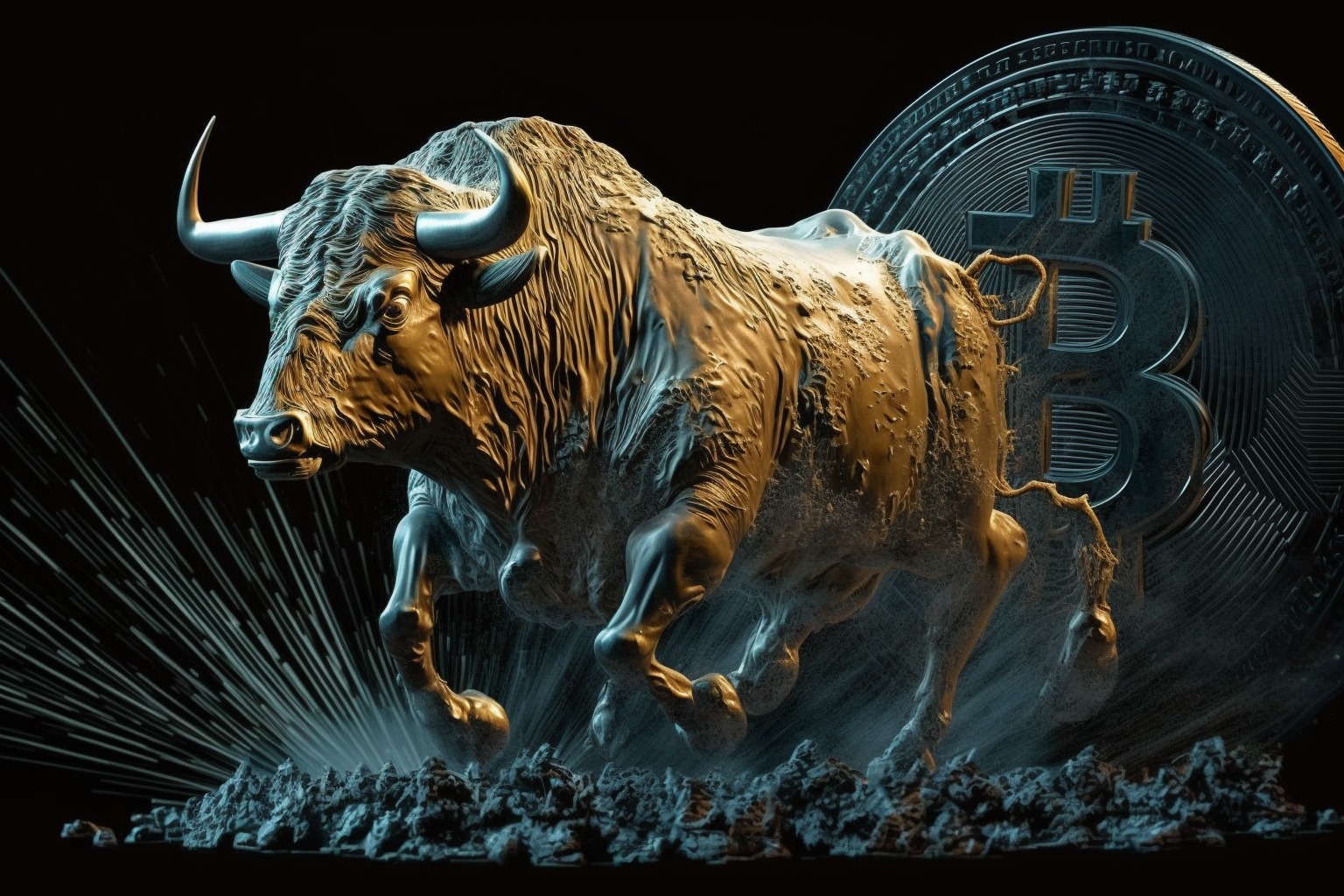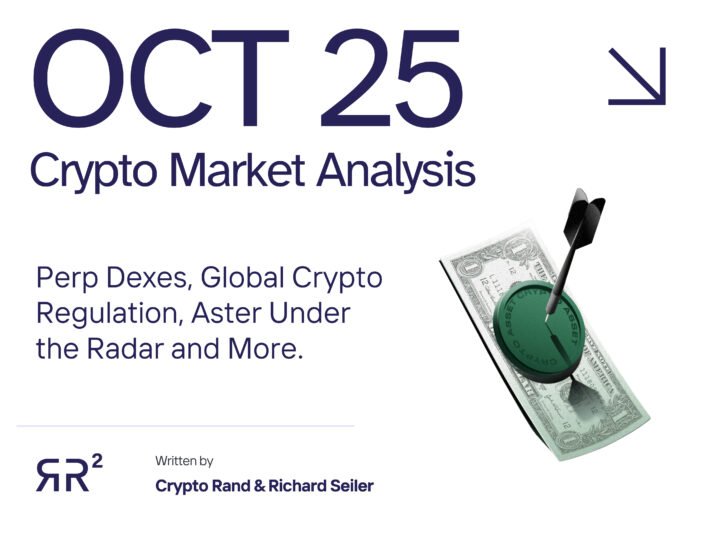Cryptocurrencies have been around for over a decade now, and they continue to gain popularity as an alternative to traditional currency. The decentralization, transparency, and security that blockchain technology provides have made cryptocurrencies a preferred choice for many investors and traders. With thousands of cryptocurrencies currently available, it can be challenging to navigate the market and identify the most promising projects.
In this article, we will highlight the top 10 cryptocurrencies based on market capitalization, adoption, and potential for growth. As usual, please remember that the information presented is not investment advice, the cryptocurrency market is highly volatile, and you need to base your level of involvement on your personal circumstances.
What are cryptocurrencies?
Cryptocurrencies are digital assets designed to act as a medium of exchange. They are based on blockchain technology, which is a distributed ledger that records all transactions on a decentralized network of computers. Each transaction is verified by a network of nodes, and once it is verified, it is added to the blockchain. This makes it very difficult to manipulate or hack the system, making cryptocurrencies more secure than traditional forms of currency.
Crypto assets are decentralized, which means that they are not controlled by any government or financial institution. One of the main benefits of cryptocurrencies is that they allow for fast and low-cost transactions across borders. Traditional forms of currency can be subject to high fees and long transaction times when moving money across different countries. Cryptocurrencies eliminate these barriers and provide a more accessible way to transfer value globally.
Bitcoin (BTC)
Bitcoin is the first and most well-known cryptocurrency. It was created in 2009 by an anonymous individual or group using the pseudonym Satoshi Nakamoto. Bitcoin is based on a decentralized blockchain network that allows for secure and transparent transactions without the need for intermediaries.
As of May 2023, Bitcoin’s market capitalization is around $530 billion USD, making it the largest cryptocurrency by market cap. Bitcoin’s popularity and value have been driven by its potential to disrupt traditional financial systems, its finite supply, and its high level of security.
Bitcoin’s primary use case is as a store of value and a medium of exchange. Many investors hold Bitcoin as a long-term investment, believing that its value will continue to increase over time. Bitcoin can also be used to purchase goods and services, with an increasing number of merchants accepting Bitcoin payments.
Bitcoin often endured extreme price volatility, with its value reaching an all-time high of almost $65,000 USD in April 2021 before dropping by more than 50% in the following months. Despite this, Bitcoin has continued to gain mainstream adoption and is now accepted by many major companies and institutions, which could be further accelerated by proposed crypto ETFs.
Overall, Bitcoin has paved the way for the development of other cryptocurrencies and blockchain-based projects. Its potential to revolutionize the financial industry has made it a popular investment choice for many, and it still represents a large portion of the total cryptocurrency market.
Ethereum (ETH)
Ethereum is a decentralized blockchain platform that was created in 2015 by programmer Vitalik Buterin. It is the second-largest cryptocurrency by market capitalization, with a market cap of around $210 billion USD as of May 2023.
One of the main differences between Ethereum and Bitcoin is that Ethereum is not just a cryptocurrency but also a platform for building decentralized applications (dApps). Ethereum’s native currency, Ether (ETH), is used as the primary payment method for transactions on the network.
The Ethereum blockchain allows developers to create and deploy smart contracts, which are self-executing contracts that automatically enforce the terms of an agreement. This opens up a wide range of possibilities for applications, from financial instruments to supply chain management to voting systems.
The coin’s history includes several notable events, such as the DAO hack in 2016, which resulted in the loss of millions of dollars worth of Ether. This event led to a hard fork creating two separate blockchains – Ethereum (ETH) and Ethereum Classic (ETC).
The Ethereum blockchain has continued to gain popularity and adoption, with an increasing number of developers and businesses building on the platform. Its potential to disrupt traditional industries and create new economic models has made it a popular investment choice for many.
Tether (USDT)
Tether is a stablecoin that was created in 2014 with the goal of providing a cryptocurrency that is pegged to the US dollar. As of May 2023, Tether is the third-largest cryptocurrency by market capitalization, with a market cap of around $80 billion USD.
Tether is used as a stable store of value and a medium of exchange. The coin is designed to maintain a 1:1 ratio with the US dollar, which means that the value of one USDT token should always be equivalent to one US dollar. This stability makes Tether a popular choice for traders who want to move funds between different cryptocurrency exchanges without being subject to the price volatility of other cryptocurrencies.
The token has been subject to controversy and scrutiny, with some critics questioning whether the token is actually fully backed by US dollars. The company behind Tether has stated that each USDT token is fully backed by a corresponding US dollar held in reserve. However, there have been concerns about the lack of transparency surrounding the coin’s reserve holdings.
The token’s past is rich in legal issues, but despite these controversies, Tether remains a popular choice for traders and investors who value stability and liquidity. Its ability to facilitate quick and low-cost transfers between different cryptocurrency exchanges has made it an important part of the cryptocurrency ecosystem.
Binance Coin (BNB)
Binance Coin is a cryptocurrency that was created by the Binance cryptocurrency exchange in 2017. Binance Coin is currently the fourth-largest cryptocurrency by market capitalization, with a market cap of around $50 billion USD as of May 2023.
BNB is a utility token on the Binance cryptocurrency exchange. The coin can be used to pay for trading fees on the Binance exchange, as well as other fees and services offered by the exchange. Binance also offers discounts on trading fees for users who hold BNB in their exchange accounts.
Since its launch in 2017, Binance Coin has grown to become one of the largest and most widely used cryptocurrencies. Binance has also expanded its services beyond just a cryptocurrency exchange, offering a wide range of products and services for both retail and institutional customers.
The token’s success has been driven by its utility as a payment method and the popularity of its mother exchange. As the cryptocurrency industry continues to grow, BNB is likely to play an increasingly important role in facilitating transactions and providing liquidity for traders and investors.
USD Coin (USDC)
USD Coin (USDC) is a stablecoin that was launched in 2018 by Circle, a global financial technology firm, and Coinbase, a cryptocurrency exchange. USDC is pegged to the US dollar, with each USDC token representing one US dollar. As of May 2023, USDC is the fifth-largest cryptocurrency by market capitalization, with a market cap of around $30 billion USD.
USDC’s stability and liquidity make it a popular choice for traders and investors who want to move funds between different cryptocurrency exchanges without being subject to the price volatility of other cryptocurrencies. USDC can also be used for online purchases and other transactions, much like traditional forms of currency.
Unlike other stablecoins, USDC’s reserves are regularly audited by an accounting firm to ensure that each USDC token is fully backed by US dollars held in reserve. This transparency has helped to build trust in USDC and make it a preferred choice for traders and investors.
XRP (XRP)
XRP (XRP) is a cryptocurrency that was created by Ripple in 2012. XRP is designed to facilitate fast and low-cost international payments and is currently the sixth-largest cryptocurrency by market capitalization, with a market cap of around $25 billion USD as of May 2023.
XRP serves as a bridge currency for cross-border payments. The token is used as a settlement currency on the Ripple network, which allows financial institutions to transfer funds between different currencies quickly and efficiently. Ripple has also expanded its services beyond just facilitating payments, offering a range of products and services for financial institutions and other businesses.
In 2017, The Securities and Exchange Commission (SEC) in the United States accused Ripple of selling XRP as an unregistered security, leading to legal challenges and uncertainty around the future of the token. For this reason, investors should exercise caution and conduct thorough research before investing in XRP.
Cardano (ADA)
Cardano (ADA) is a decentralized blockchain platform that was launched in 2017 by IOHK, a blockchain research and development company led by Charles Hoskinson. Cardano is designed to be a more sustainable and scalable blockchain platform than its predecessors and is currently the seventh-largest cryptocurrency by market capitalization, with a market cap of around $14 billion USD as of May 2023.
The main use case for Cardano is as a platform for building dApps based on smart contracts. Cardano uses a proof-of-stake consensus algorithm, which is designed to be more energy-efficient than the proof-of-work algorithm used by other blockchains like Bitcoin. This means that Cardano can process more transactions at a lower cost, making it a more sustainable platform for developers and users.
The token’s development process is based on a rigorous peer-review process, with academic researchers and industry experts providing feedback and guidance on new features and improvements. This approach has helped to build trust in Cardano and make it a popular choice for developers and investors.
Cardano’s potential to provide a more sustainable and scalable blockchain platform has led to growing adoption and partnerships with major companies and institutions. In 2021, Cardano launched its first smart contract platform, which allows developers to create and deploy decentralized applications on the Cardano network.
Dogecoin (DOGE)
Dogecoin is a cryptocurrency that was created in 2013 as a lighthearted joke by software engineers Billy Markus and Jackson Palmer. Dogecoin is based on the popular “Doge” internet meme, which features the image of a Shiba Inu dog.
Despite its origins as a joke, the largest meme coin has gained a significant following and is currently the eighth-largest cryptocurrency by market capitalization, with a market cap of around $11 billion USD.
Unlike other major crypto coins, Doge is mainly designed as a digital currency for tipping and micropayments. The low transaction fees and fast transaction times make it a popular choice for online transactions and for sending small amounts of money between individuals.
The meme coin is known for extreme price volatility and a highly active community of supporters. In 2021, it experienced a massive price increase, driven in part by endorsements from celebrities like Elon Musk. However, the price of Dogecoin has also been subject to sharp drops, leading some to question its long-term viability as a cryptocurrency.
Dogecoin’s community of supporters remains highly active and engaged and has organized numerous charity fundraisers and other events, using the currency as a means of promoting positive social change.
Polygon (MATIC)
Polygon is a cryptocurrency and blockchain platform that was launched in 2017 as Matic Network. Polygon is designed to provide a more scalable and user-friendly blockchain platform, with a focus on improving the speed and cost of transactions. As of May 2023, Polygon is the ninth-largest cryptocurrency, with a market cap of around $9 billion USD.
The platform is great for building decentralized applications (dApps). It is designed to be compatible with the Ethereum blockchain, allowing developers to create and deploy dApps on the Polygon network using the same tools and frameworks as they would for Ethereum. Polygon uses a proof-of-stake consensus algorithm, which is designed to be more energy-efficient and scalable than the proof-of-work algorithm used by Ethereum.
In 2021, Polygon experienced a massive price increase, driven by growing adoption from developers and investors. The network has also formed partnerships with a wide range of companies and institutions, including the gaming platform Atari and DeFi protocol Aave. The main advantage of Polygon is its scalability, which allows for faster and cheaper transactions compared to other blockchain platforms.
Solana (SOL)
Solana (SOL) is a decentralized blockchain platform that was launched in 2020. Solana is designed to be a highly scalable and fast blockchain platform with a focus on improving the speed and cost of transactions. As of May 2023, Solana is the tenth-largest cryptocurrency, with a market cap of around $8 billion USD.
Solana aims to be a platform for building decentralized applications (dApps). Solana uses a unique consensus algorithm called Proof of History (PoH), which allows for faster and more efficient validation of transactions. Solana’s fast transaction processing times and low transaction fees make it a popular choice for game developers.
In 2022, Solana suffered a major price decrease related to its close ties to the bankrupt crypto exchange FTX, but it has stabilized since then.
The main advantage of Solana is its scalability, which allows for faster and cheaper transactions compared to other blockchain platforms. As the demand for fast and cost-effective blockchain platforms continues to grow, Solana is likely to play an increasingly important role in facilitating the development and adoption of decentralized applications.
Crypto FAQs
What are altcoins?
Altcoins refer to any cryptocurrency that is not Bitcoin. The term “altcoin” is short for “alternative coin” and is used to describe any cryptocurrency that was created after the launch of Bitcoin in 2009. Altcoins can have a wide range of different features and use cases and can be designed for everything from fast and cheap transactions to privacy and anonymity. Some of the most popular altcoins include Ethereum, Binance Coin, and Cardano.
Why is Bitcoin valuable?
Bitcoin is valuable for several reasons. Firstly, it is decentralized, meaning that it is not controlled by any central authority or government. This gives users more control over their own finances and makes Bitcoin resistant to censorship and other forms of interference.
Bitcoin also has a limited supply, with a total of 21 million bitcoins that will ever be created. This scarcity gives Bitcoin a value similar to gold or other rare commodities.
Finally, Bitcoin is valuable because it can be used as a store of value and a medium of exchange. Bitcoin can be used to make purchases and payments and can be easily transferred between individuals or organizations around the world. Its increasing adoption and use by major companies and institutions also contribute to its value.
Why are cryptocurrencies important?
Cryptocurrencies provide a decentralized and secure way to transfer value between individuals or organizations without the need for intermediaries like banks or other financial institutions. This gives users more control over their own finances and allows for more privacy and security in transactions.
Digital tokens can provide a more efficient and cost-effective way to transfer value, particularly for international transactions. This can help to reduce fees and processing times, making it easier for individuals and businesses to participate in global commerce.
Cryptocurrencies also represent a new and innovative technology that has the potential to disrupt traditional financial systems and provide greater financial inclusion for people around the world. As the crypto industry continues to grow and mature, it is likely to play an increasingly important role in the global economy.
What is a stablecoin?
A stablecoin is a type of cryptocurrency that is designed to maintain a stable value relative to a specific asset, such as a fiat currency like the US dollar or a commodity like gold. Stablecoins are typically used to provide a more stable store of value and a medium of exchange within the cryptocurrency ecosystem, as they are not subject to the same level of price volatility as other cryptocurrency prices. Stablecoins can be backed by reserves of the underlying asset or can be algorithmically controlled to maintain a stable value. Some popular stablecoins include Tether (USDT), USD Coin (USDC), and Dai (DAI).
Which is the best cryptocurrency to invest in?
It is difficult to determine which cryptocurrency is the best to invest in as the crypto market is highly volatile and unpredictable. The value of cryptocurrencies can fluctuate rapidly and is subject to many factors, such as market demand, regulatory changes, and technological advancements.
Why are there so many cryptocurrencies?
There are so many cryptocurrencies because the underlying technology, blockchain, allows for the creation of new cryptocurrencies relatively easily. Each cryptocurrency can have unique features, use cases, and target markets, which can lead to the creation of new cryptocurrencies to meet specialized needs or demands.








